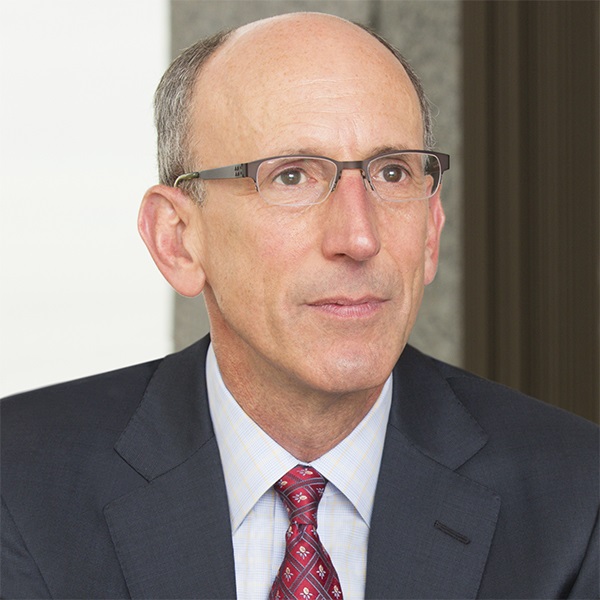Bonds
Last year may go down in the record books — and not in a good way. The double whammy of skyrocketing inflation and surging interest rates took a toll across the fixed income world. The 10-year Treasury yield ballooned from roughly 1.5% at the start of the year to more than 4.3% at its high. And though yields eased in the closing weeks, it wasn’t enough to offset the earlier pain.
The immediate outlook for inflation and interest rates remains unclear as 2023 gets underway. But the new year also brings a far more compelling scenario: After years of steadily declining bond yields, fixed income securities actually offer decent income.
To provide some clarity on what 2023 might hold, we sat down with Capital Group Private Client Services portfolio managers John Queen and Mark Marinella, Capital Group fixed income portfolio manager Timothy Ng and Capital Group municipal bond analyst Steve Chuang.
The bond market is coming off a difficult year. How did we get here, and what do you foresee going forward?
John Queen: The combination of an unusually large rise in interest rates — and interest rates starting at such extremely low levels — made last year a very tough one for fixed income. Generally, bond investors get some modest capital appreciation or depreciation depending on the change in interest rates. And, of course, they receive income and reinvest it along the way. When you start at near-zero rates at the short end, there is no cushion whatsoever to protect against rising rates. That’s what happened in 2022.
The Federal Reserve and the federal government were very stimulative during and post COVID as they tried to spur the economy and employment. There was no concern about inflation. Now, for the first time in decades, the Fed has to worry about inflation, and it’s trying to aggressively restrict economic growth.

What does that mean for the possibility of recession?
Timothy Ng: The risk of a recession is fairly high. Broadly speaking, economic activity has slowed in recent months as rate hikes and the impact of high inflation have started to bite. That’s most evident in interest-sensitive areas such as housing and autos. Given the prospect of a few more rate hikes to come, there is a likelihood that the economy decelerates further or even goes into recession.
A key challenge for the Fed is to strike the right balance between slowing the economy enough to wring out inflation without going too far and pushing it into a deep recession. How do you see that playing out?
Ng: There are two possible scenarios. If the Fed isn’t able to get a softening of the labor market and a deceleration of inflation, it could be stuck in a situation in which it can’t really address weakness in the economy because inflationary pressures are still there. The other scenario would be if the economy falls into a deeper and more protracted slowdown that leads to a sharp fall in inflation but a sharp rise in unemployment. That could prompt the Fed to provide accommodation again. At the moment, the prospect of either scenario is split about 50-50, in my estimation.
A lot may depend on how the interest rate hikes to this point impact growth and economic activity. There’s always a delayed response to monetary tightening, and we have not felt the full impact of the tightening to this point. The coming months will show how economic activity responds to the tightening of financial conditions that we’ve experienced.
So far, the economy and consumers have been fairly resilient in the face of high inflation and rising interest rates. Activity has shifted from demand for goods to demand for services. That has kept overall consumption relatively robust. On one hand, you can say consumers are still in good enough shape to weather the tightening we’ve had so far due to rising wages and high household savings. On the other hand, as has been the case in previous cycles, the longer a tightening cycle goes, the more of a negative headwind it is likely to have on consumption over time. The big question is whether that will occur early this year, late this year or maybe not until 2024.
Mark, your specialty is municipal bonds. How is the muni market faring?
Mark Marinella: Generally, the muni market is in very good shape. As with other areas of fixed income, the rise in interest rates last year negatively affected muni bonds. The silver lining, though, is that it was caused by the rise in interest rates. It wasn’t due to a financial crisis, a credit crisis or a liquidity crisis — any of which could be more serious or long-lasting.
In other words, there hasn’t been a sudden burst of troubled issuers or crumbling credits. That’s not to say that problems couldn’t emerge if a deep recession were to occur. However, even if we get a mild or moderate recession, I think that could be good news for the municipal market. It’s important to remember that we invest in high-quality securities whose creditworthiness remains solid despite higher rates.
Beyond that, the tax advantages of municipal bonds make them extremely attractive. For people in higher tax brackets, tax-exempt income from muni bonds is very compelling.
For our many clients who hold California muni bonds, how is this area of the market doing?
Steve Chuang: Fundamentally, things are going pretty well for California state and local bonds. California built up its financial reserves throughout the economic expansion. The state tapped its reserves during the initial phase of the COVID crisis. But thanks to significant federal aid, combined with the recovery in employment and economic activity, the state quickly bounced back to producing budget surpluses.
California has tended to be affected by recessions because of its heavy reliance on personal income taxes and especially by how much of that comes from the top 1%. Some of that comes from capital gains, which tend to be somewhat cyclical. So there are clouds to watch. But California is in a very strong starting position in terms of reserves and revenue.
On the local side, finances are driven more by property tax revenue, which has benefited a lot from the run-up in California real estate over the past decade. There are some clouds gathering amid the housing slowdown. However, because many California properties have assessed values far lower than their market values, there is some buffer there. Also, city- and county-assessed values usually operate with a one- to two-year lag. This means there’s some time to adjust to any short-term property value declines.
Capital Group fixed income analysts dig deeply into the industries they cover — typically going beyond normal financial statements to understand the broader forces that could affect issuers. An example of this is our coverage of hospitals. Mark, please tell us about that.

Marinella: One of the things that our hospital analysts are paying extremely close attention to is the availability of nurses — or, to put it more accurately, the nationwide nursing shortage that could become more pronounced over time. The nursing community is strained by a number of factors — including the heavy stress of the job itself — and there is a real concern about hospitals having enough nurses for patient care.
In general, larger or more national hospital systems have the financial muscle to bid away nurses from smaller or regional enterprises. That’s very important in terms of the service they provide. But it also means increasing cost pressures. Our analysts examine factors like this on a case-by-case basis to understand the potential impact on each individual hospital.
Steve, please give us a sense of the sectors where you are finding opportunities in the muni world.
Chuang: One of the sectors that I’ve liked lately has been hotel tax bonds. These bonds are backed by hotel tax collections. The taxes are often used for stadium or convention-type projects that draw visitors, and that benefits all the hotels. Hotel tax revenue is almost back to where it was before the pandemic in a few of the key markets that have bonds.
Another sector that we tend to like is school districts, especially those in some of the inland areas of California. The yield on these securities is often very attractive, in part because they are slightly lower rated than school districts in better-known cities. However, these are high-quality bonds backed by property taxes. School districts with stable-to-growing enrollment, solid budget surpluses and sound financial fundamentals can be very appealing.
One of the interesting dynamics of the new year is that bond yields have risen from the extremely low levels of the past decade. Is that likely to help returns moving forward?
Marinella: We head into 2023 with much, much higher yields, and it is much easier for bonds to perform when they start off yielding more. That is good news for bond investors.
Queen: Once investors have suffered through the brunt of the increase in rates — which I believe we did last year — investors will continue to receive higher interest rates. That’s good for returns.

In some ways, we might be getting back to a conventional bond market environment. In the last decade, investors received relatively modest income but benefited from a decline in rates and the capital appreciation that brought. But bonds are not primarily total return vehicles; they’re primarily income vehicles. That means receiving and reinvesting dividends. It’s important to realize that getting the bulk of your potential return from dividends should be considered a good thing.
Has the new backdrop of rising inflation and interest rates influenced how you manage portfolios?
Queen: I have been — and I think most Capital Group portfolio managers have been — trying to position portfolios to protect them to the extent possible from rising interest rates. For example, we were relatively light in riskier areas like credit or mortgages. Mortgages seemed very unattractive early last year as lending rates surged, though they are a lot more attractive now.
I’ve been adjusting portfolios to take advantage of those changes in the market and to position according to the risks. That’s been a consistent trend for Capital Group portfolio managers — adjusting portfolios to take advantage of these very significant moves in interest rates and valuations.
With all of the factors we’ve discussed, what kind of a bond market do you foresee in 2023?
Ng: Inflation is the No. 1 thing I’m keeping an eye on. It’s not a question of whether inflation will slow down; it’s how quickly it will slow down and what level it settles at. Even if inflation comes in higher than the market expects, I think that environment still could be very positive for bond returns. I think the degree to which inflation could surprise on the upside is fairly contained. Therefore, the degree to which the Fed will likely need to raise rates further is also contained — 0.5% to 1% at the most. Compared to last year, when the Fed’s target rate went from 0.25% to 4%, that’s a more modest increase.
There are two basic questions for bond investors: Will the Fed slow the pace of rate hikes, and is the Fed fairly close to being done tightening altogether? I think the answer to both questions is yes. If we get those two components, I think that takes away a lot of the uncertainty that was behind the negative bond returns in 2022. And with that uncertainty diminished, I think a lot of money could flow back into bonds, which should support returns. All in all, I think the prospect for returns for bond investors in 2023 is decent. You get a higher starting yield that will buffer a lot of potential volatility.

Related Insights
Related Insights
-
-
Economic Indicators
-
Portfolio Construction

 John Queen
John Queen
 Mark Marinella
Mark Marinella
 Tim Ng
Tim Ng